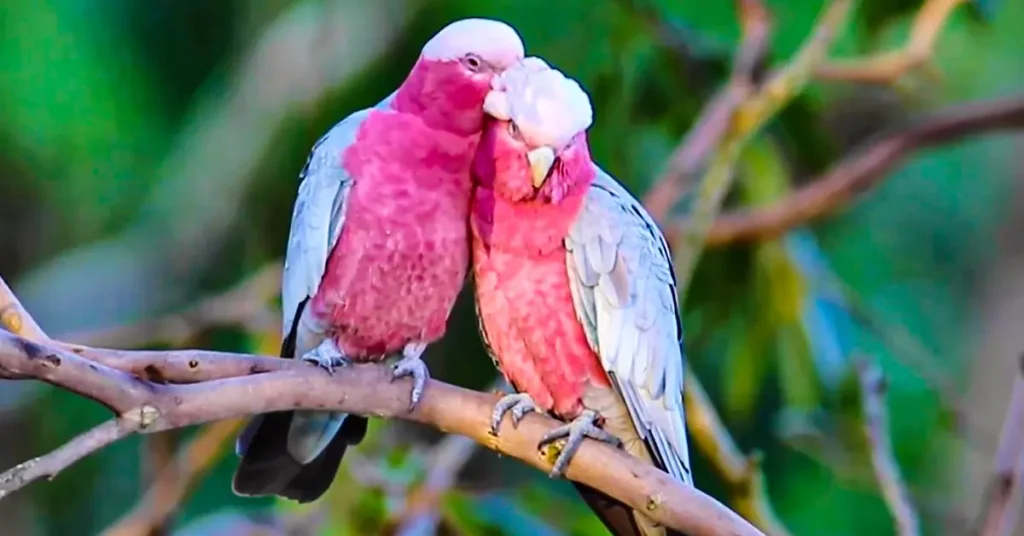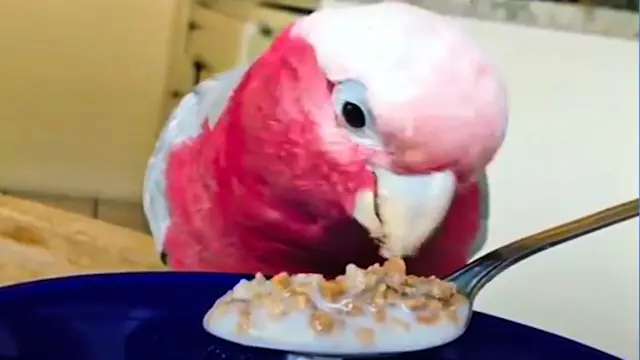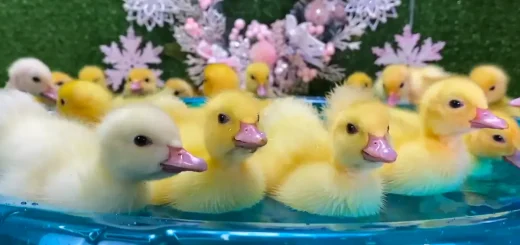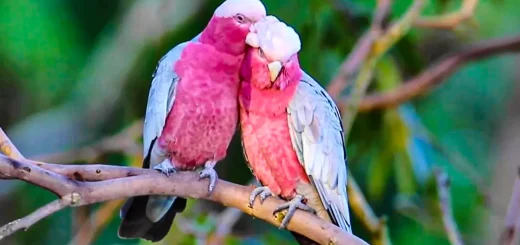Rose Breasted Cockatoo (Galah) Profile, Diet and Nutrition

Rose-breasted Cockatoo is an ideal parrot for someone who enjoys regular human interaction with their feathered friend. With consistent training, this lovely pink bird can quickly learn to utter numerous things and perform complex stunts. It is also brilliant and has a huge soft spot for people. Even in Australia’s most hostile environments, this hardy bird manages to make a home. In this article, we will discuss everything you should know about Rose-Breasted Cockatoo.
Related: Galah Cockatoo
Species Overview
Common Names Galah, Galah cockatoo, pink and gray Cockatoo, crimson-breasted Cockatoo, roseate Cockatoo, Rose-Breasted Cockatoo parrot
Scientific Name: Eolophus Roseicapillus has three subspecies with slight color and size variations from different regions in Australia: Eolophus Roseicapillus biceps (southeastern), E. r. roseicapilla (western), and E. r. Khuli (northern)
Adult Size 12 to 15 inches in length, weighing 10 to 14 ounces
Life expectancy: Can live to 70 years in captivity; most commonly, will live 40 or so years.
Origin and History
Throughout much of Australia, you can spot the native Rose-Breasted Cockatoo bird in open grasslands. Its presence in Tasmania is self-sustaining. You can also see sulfur-crested cockatoos in the same flocks. The Cockatoo will breed with other cockatoo species. People living in cities often see Rose-Breasted Cockatoos. They feed on farmed crops and drink from artificial ponds and cattle watering troughs. These birds are more common in urban and suburban environments. Yuwaalaraay is the Indigenous Australian language, and the term “Rose-Breasted Cockatoo” means “fool” or “clown” respectively. This intelligent bird received its moniker because it was a real pain to hear. The Australian slang word “Rose-Breasted Cockatoo” refers to a “loud-mouthed idiot.” More
Personality traits
The Rose-Breasted Cockatoo is well-known for its amiability and reputation as a devoted companion. These birds aren’t as fond of cuddling as umbrella cockatoos. However, they’re used to dealing with it. A Rose-Breasted Cockatoo requires a lot of time and attention, so plan accordingly if you’re thinking about getting one. This delicate bird needs its caretakers to be constantly present and attentive. The rose-breasted Cockatoo is a naturally gregarious bird. It can go into a destructive funk if its human flockmate gives it the silent treatment.
Intelligent, Social, And Hardy
The brilliant Rose-Breasted Cockatoo can imitate a large variety of sounds and words. It is a bonus to its breathtaking beauty. They are a gregarious bird that does best in groups. So, these birds need continual attention when you pet them. They need a caretaker who is wholly committed and sympathetic to their character. The fact that Rose-Breasted Cockatoos get along so well with people in cities is proof that they are not scared of people. They have a high tolerance for conditions that would ordinarily kill off other exotic birds, which is why they are also thought of as parrots. Their inherent adaptability to a wide variety of environments is in part due to their robust constitution. Around forty years is the average lifespan of a rose-breasted cockatoo. They may reach the age of 70 while kept as pets.
Dangers In The Wild
Unfortunately, not everyone finds these beautiful birds endearing. Some people even consider wild Rose-Breasted Cockatoo cockatoos to be a nuisance. They seek crops for sustenance because of their attractiveness. Wild Rose-Breasted Cockatoos annoy farmers and make effective management impossible. They often claim things like cattle watering containers. Hundreds can swoop down on vital crops, causing farmers to suffer devastating losses. The crops and the birds could both suffer devastating losses as a result of this. In order to save their harvests, farmers will and frequently do engage in numerous cruel practices. A gorgeous pet with endless potential for companionship, adopted tricks, a whole vocabulary, and love, the Rose-Breasted Cockatoo stands out with its stunning pink crests, chests, and faces that contrast with its gray wings. The right environment can make a pink cockatoo a loyal friend for many years.
Speech and Vocalizations
While flocking together, wild Rose-Breasted Cockatoos make a raucous, extremely high-pitched noise. In times of excitement, fear, or needing attention, they are capable of producing a resonant screech. Train whistles, car horns, and telephone ringtones are just a few examples of the repeating noises that this perceptive bird can mimic. It is said that men tend to talk more than women do. Even though it belongs to the parrot family and is known for its loud calls, the Rose-Breasted Cockatoo cockatoo is actually relatively quiet. Condos and apartments are not the best places for this bird to live. Twice a day, at dawn and dusk, it makes a lot of noise.
Patterns and Colors on Rose-Breasted Cockatoo

Rose-breasted Cockatoo are becoming more and more popular as pets because of their pleasant natures and vibrant colors. The rose-breasted Cockatoo gets its name from the fact that it is characterized by a plethora of vivid pink feathers that cover its chest, belly, and lower face. Their horn-colored beaks stand out against their gray feet, wings, and tails, which are adorned with pinkish-white crests. A characteristic of all cockatoos, the Rose-Breasted Cockatoo’s head crest spreads out in a show of excitement or fear. Trying to tell a Rose-Breasted Cockatoo’s sex by looking into its eyes is the simplest method. The iris (the part of the eye that covers the pupil) is more profound and nearly brown in men and lighter and pink in females. My observation is that females often sit on a perch with their legs further apart, whereas males may be more chatty.
Caring for the Rose-Breasted Cockatoo
Being a very high-maintenance pet, your bird will desire to spend a lot of time interacting with you. If you’re too busy to interact with this bird, house it with another Rose-Breasted Cockatoo. These parrots want a peaceful, dark environment to sleep in, just like their natural roosting spots. Birds generally sleep better when their cages are covered at night. Although it’s not a vast parrot, this bird needs a lot of room to fly around. It requires a cage that is at least five feet square. The Rose-Breasted Cockatoo requires a great deal of time and effort. As far as anyone can tell, it thrives in human contact and may experience depression if it doesn’t receive enough of it.
Socialization
The Rose-Breasted Cockatoo cockatoo’s compatibility with avian partners sets it apart from other cockatoo species. As in the wild, Rose-Breasted Cockatoos often congregate in groups, so having a companion can help alleviate feelings of loneliness.
Grooming
Self-Grooming Like cats, most cockatoos take frequent showers. Rose-breasted cockatoos are pretty good at maintaining their hygiene. Nevertheless, certain parts of their maintenance will require your assistance. To assist in preening, rub your fingers over the Rose-Breasted Cockatoo’s neck and head to release old feather shafts if you do not have a second Rose-Breasted Cockatoo in the cage. Trimming their beaks and nails is also necessary. Another option is to clip the Rose-Breasted Cockatoo’s wings if you’d like it not to fly. To get some help with these things, you can call a bird vet.
Habitat Setup
Despite their diminutive size, Rose-Breasted Cockatoos require ample room to maneuver around in order to ensure their comfort. Cage dimensions should be at least 3′ wide by 3′ deep by 6.5′ high. Rose-breasted cockatoos also require things like branches, perches, and toys to keep them from getting bored.
Diet and Nutrition

In their natural habitat, Rose-Breasted Cockatoos supplement their diet with grasses, flower buds, seeds, and, occasionally, insects. Rose-breasted cockatoos, when kept as pets, require a well-rounded diet. Leafy greens (e.g., romaine, kale, Swiss chard, and Chinese cabbage), roots, peppers, zucchini, green beans, and sprouts are some of the best options when it comes to fresh veggies. Berries and fruits are their favorite. Training goodies like almonds, pecans, and walnuts should be given sparingly. A constant supply of clean water ought to be maintained. If they are overfed and need to be more active, they can gain a lot of weight. Rose-breasted cockatoos tend to ingest things that aren’t food, so keep that in mind. Keep a tight eye on your bird whenever it’s outside of its cage to prevent it from eating anything that could choke or obstruct its airway.
Exercise
Rose-breasted cockatoos are very energetic birds that require a lot of physical activity to stay healthy. Make sure to let this bird out of its cage for at least three or four hours every day. They have a soft spot for toys, but playing with the same ones over and over again could weary them. Keeping young minds active requires a variety of playthings, which you should provide. A box containing a reward is an excellent option for brain stimulation. The Rose-Breasted Cockatoo will enjoy opening the package and finding its prize.
Your Rose-Breasted Cockatoo will enjoy playing in its cage for a while, but it also requires several hours of free playtime daily. To prevent your Cockatoo from injuring its powerful beaks and jaws, supply it with plenty of chewable, safe wood or leather toys. Toys play a crucial role in these birds’ enrichment programs. It’s a good idea to change out their toys frequently to maintain the birds’ interest and promote autonomous play.
Common Health Problems
Although Rose-Breasted Cockatoos tend to be healthy, a few issues might develop.
Among them are:
Respiratory diseases: Keeping the cage and house dust-free is a great way to protect your pet from respiratory illnesses.
Fatty tumors: People who don’t exercise and eat a lot of fat can develop fatty tumors. Ensure a balanced diet and exercise for them.
Self-destruction: They often engage in harmful actions due to a lack of focus. Feather pulling, self-inflicted wounds, and incessant squawking are among these. Because of this, before you welcome a Rose-Breasted Cockatoo into your home as a pet, make sure you can devote enough time and energy to taking care of it.
Conclusion
Here is all the information about the Red-Breasted Cockatoo. Although it demands a lot of time and energy, the Rose-Breasted Cockatoo is a popular and entertaining pet. They are very demanding because of how long they live. You might want to consider getting a Rose-Breasted Cockatoo as a pet if you’re confident you can give them a good home.
FAQs
How can you determine the gender of a Rose-Breasted Cockatoo?
Looking into a Rose-Breasted Cockatoo’s eyes is the most straightforward approach to trying to guess its gender. The iris is darker and nearly brown in men and lighter and pink in females. Another way to tell the sexes apart is by looking at their behavior; for example, men generally seem to be better speakers, while females are more likely to sit on a perch with their legs apart.
How can I determine how old my Rose-Breasted Cockatoo is?
Age determination is a bit trickier, but a second look at the eyes should give you a good indication. A bird’s wrinkle count is one indicator of its age. Counting the beak layers and examining the feet are two other techniques. In most cases, a bird’s age is indicated by the number of wrinkles surrounding its eyes.
What sounds does a Rose-Breasted Cockatoo make, and can they talk?
The flight call of a Rose-Breasted Cockatoo in the wild is reminiscent of a rather high-pitched “Chet Chet” sound. When they’re angry, playing, or threatened, they let out a far more piercing screech. The Rose-Breasted Cockatoo is an exceptionally bright bird with the ability to mimic human speech patterns. Compared to the female Rose-Breasted Cockatoo, the male appears to be far more adept at this. The birds can also mimic everyday noises like a horn, a telephone ringing, or a whistle.
How can I stop my Rose-Breasted Cockatoo from screeching in the mornings?
Covering the bird’s cage with a big, cheap tablecloth or something similar will help keep it from making its natural morning noises. Another option is to relocate the bird’s cage away from windows or other locations where it can see the sun rising or hear other birds outside. If relocating the cage is not possible, you might want to consider using darker window coverings or curtains.
My Rose-Breasted Cockatoo chews “everything” — what can I do?
Rose-breasted cockatoos maintain their beaks in tip-top shape by chewing, a natural process. If the beak is used sparingly, it will overgrow and irritate. Keep them occupied by providing them with inedible chew toys in their cage. Experiment using various materials such as rope, plastic chains, old shoe bottoms, old belts (buckle removed), and wooden perches.









